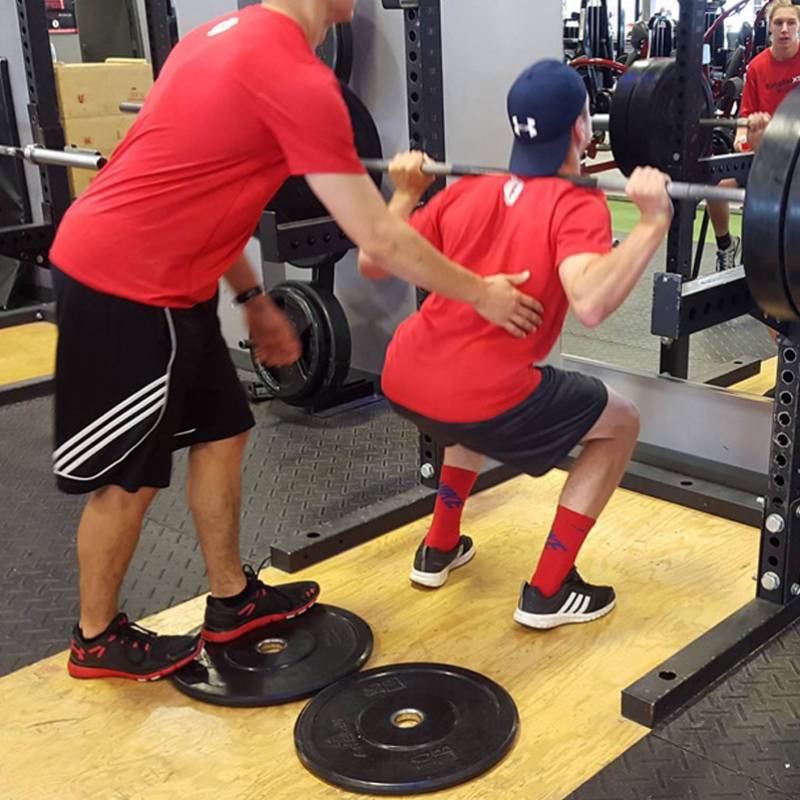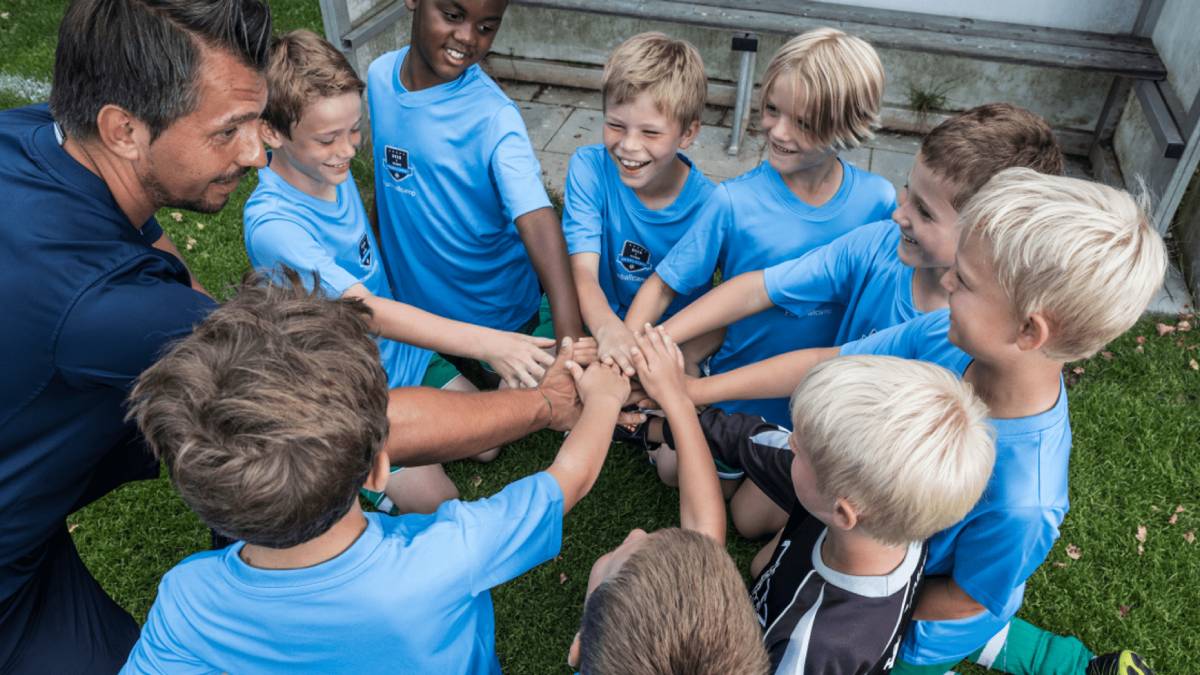A prerequisite for team sports: Power training

Every morning, you can turn on the TV and see an array of impressive sporting gestures. Think of a breakaway skate in field hockey, a dunk of incredible height and distance in basketball, an attack from 3 meters in volleyball, or a soccer player’s acceleration to score a goal. All these sporting feats have one thing in common: they were all initiated by the power of the lower body. Whether sprinting, jumping, moving, throwing or kicking, they are all fast, explosive actions that require great power from the lower limbs.
What is power?
La puissance se définit par l’action de faire un mouvement générant le plus de force et de vitesse possible à la fois. En d’autres mots, c’est l’action de déplacer le plus lourd et le plus rapide possible un objet ou son propre corps. Il faut absolument qu’il y ait présence d’un facteur force et d’un facteur vitesse pour caractériser une action de puissance, d’où l’appellation d’entraînement en force-vitesse. On peut donc comprendre assez rapidement qu’un joueur avec une grande puissance des membres inférieurs aura une meilleure accélération également. Si l’on reprend l’exemple d’une poussée de patin au hockey, on remarque que l’athlète effectue une triple flexion (hanche-genou-cheville) qui permet de contracter rapidement ses fessiers, ses quadriceps et ses mollets avant sa poussée latérale, puis il fait une triple extension qui permet de générer le maximum de puissance du bas du corps vers l’avant. Dans la même lignée d’exemple, au basketball, lorsqu’un joueur saute pour attraper un rebond au panier, retouche le sol, puis saute au panier pour marquer, on note que le joueur a utilisé la capacité élastique du muscle ainsi que le réflexe myotatique (Contraction réflexe d’un muscle qui apparaît en réaction à son étirement) pour développer sa puissance d’impulsion.
Power is defined as the action of making a movement that generates as much force and speed as possible at the same time. In other words, it’s the action of moving an object or one’s own body as fast and as heavy as possible. To characterize a power action, it is absolutely essential to have both a force and a speed factor, hence the name force-speed training. So it’s easy to understand that a player with great power in his lower limbs will also have better acceleration. If we take the example of a field hockey skate push, we’ll see that the athlete performs a triple flexion (hip-knee-ankle) to rapidly contract the glutes, quadriceps and calves before the lateral thrust, followed by a triple extension to generate maximum forward power from the lower body. In the same vein, in basketball, when a player jumps to catch a rebound at the basket, touches the ground again, then jumps at the basket to score, we note that the player has used the muscle’s elastic capacity and the myotatic reflex (reflex contraction of a muscle that occurs in response to its being stretched) to develop impulse power.
How do you train leg power?
Good power training requires a training room or specialized equipment to be used on a field or in a gym. However, before using any training method, it’s essential to carefully analyze the sport’s requirements (forward/backward movement, short/long, effort/rest time, etc.) as well as the competition schedule. Then, using the data obtained, it’s possible to determine the training volume, intensity and frequency for each week of physical preparation (Training Periodization). Finally, you can decide whether to train in a sports hall or in a gymnasium/flat track.
In a gym:
If the option is chosen in the gym, you can use a method called “accentuated contrast”. This method is characterized by the use of a lower-body exercise (e.g. squat) in a strength series, followed immediately by an explosive exercise (e.g. box jump). It’s a method that can be easily adapted to the power angles required by each sport.
In a gym/flat area:
Here’s an example of Pliometry circuit training:
Let’s take the example of a field hockey team of 18 players aged 14-15. First, you pair up the players in pairs. Then, they must perform 10 different stations of high hurdles, low hurdles, step, box, ladder, etc. (Choose between 8 and 12 different stations depending on the sport played, the objective of the session, the experience of the players and the training/competition schedule). (As field hockey is a sport that requires single- and sometimes double-pressed power efforts, we’ll use one-footed and two-footed jumps). As for our field hockey players’ effort time, we’ll choose an effort time of 15 seconds followed by a rest (active or passive) of 15 seconds. The effort/rest time varies according to the time of year (Periodization).
It’s also important to adapt the number of repetitions and sets. For example, we recommend 10-12 repetitions (one repetition = 15 seconds of effort at the station), 2 to 4 sets and a rest between sets of 3 to 5 min. It’s possible to choose the number of stations according to the number of repetitions, or to repeat certain stations in the same series, but make sure that the player starts the next series at the next station. The final result is a workout of 2-4 sets of 10 x (15”/15”) with a 3-5 min rest.
Alexcellence Physique with its various sports teams
In conclusion, Alexcellence Physique regularly uses plyometric training to develop its athletes’ lower-body strength and cardiovascular fitness, whether in field hockey, basketball or ultimate frisbee. However, each session and choice of exercises (Stations) is determined according to: the sport, the trainer’s objective, the number of athletes, the available space, the weather, the schedule, experience and then comes the time to decide on the number of stations, the number of sets, the effort/rest time, the choice of passive or active rest or pre-fatigue effort, the number of repetitions and more. So there are many minutes, if not hours, behind the development of a single plyometric workout. On the other hand, this method is very effective and delivers very good results very quickly to players, making it possible to train several athletes simultaneously and bring each of them into a zone of overachievement. What’s more, this type of training creates a team spirit and “challenge” with teammates.
In a future article, we’ll talk about plyometric training; Neurometabolic Circuit, which works more on strength-speed endurance (Power Endurance).
Keven Lemelin, B.Sc.
Alexandre Lessard, B.Sc,
www.alexcellencephysique.com
Karl Demers

On the same subject
The coach-player relationship is the key to team success and athlete growth. Here are 4 key points for maintaining this relationship.
As a coach, you want to see your players improve, but you also want them to enjoy their sport.
As we know, training requires a good dose of motivation. That is why we decided to share you several sport music playlists available on Spotify. […]


